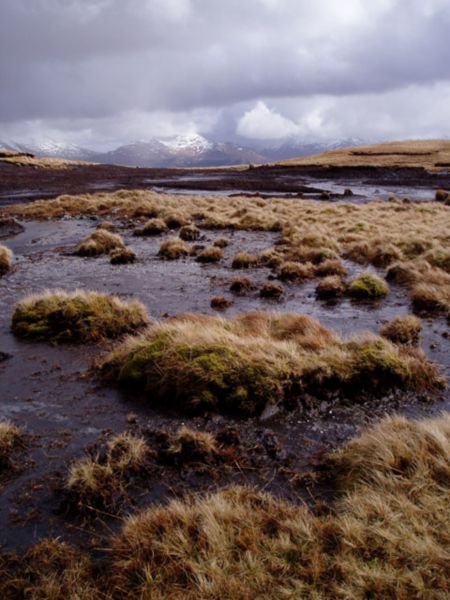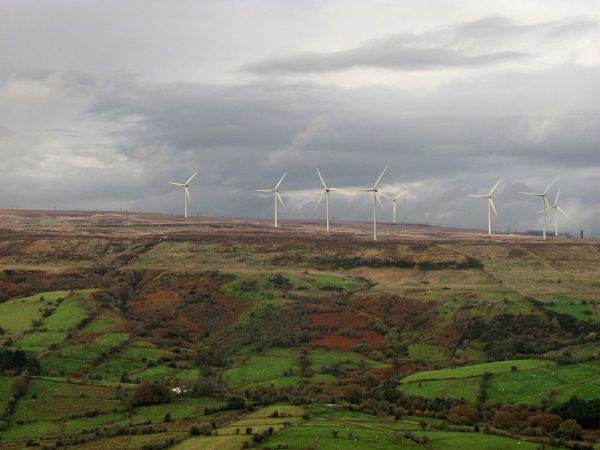
Marijke Ross
Planning has been pushed back once more. New expected date for the planning application is now March/April 2018. The reason given for this is the landowner where the track is supposed to join the road. As we had heard previously the landowner is reluctant to sell or lease the land.
Coriolis Energy is employing consultancy firm AM Geo-morphology Ltd. Its expert has also recently been appointed as the advisor on Peat Land and Blanket Bogs to the Scottish Government. The Glendye windfarm area was classified by SNH as a class 1 blanket peat bog - however the AM Geomorphology report apparently disagrees with this classification. The fact that Coriolis are using the same expert to aid and push through their planning application as the Scottish Government is totally unacceptable in our opinion.
Utilities connection - This planning application will only be submitted when the actual windfarm is approved, and is likely to cause even more landscape destruction. The decision as to how the power is connected is completely down to SSE. Coriolis have very little input on the decision. The 2 possibilities are to either link in at the Mid Hill substation (Fetteresso) - over ground - or otherwise to go underground along track then build a new substation for linking to the grid via the pylons that run along the bottom of the hill. It's probably all down to cost and the size of the substation that would need to be built. If cost is the deciding factor, then it is most likely we will be looking at a huge line of pylons decorating the Cairn o'Mounth road.
The Glendye windfarm site is predominantly an area of blanket bog, which is a type of peatland. Peatlands are important for carbon storage, water regulation and biodiversity, and preserving peatlands is one of our first defences against global warming. To quote Stuart Brooks (until recently the CEO of the John Muir Trust):
"Windfarms can make a really important contribution to reducing greenhouse gasses, but so can peatlands. Peatlands store a huge amount of carbon gasses, so when we build windfarms on peatlands, it is self-defeating. Let's not think this is some kind of wasteland that has no value. It has huge value. We have to stand up for these wild places."
 |
| Peat bog, near Stirling © David Gruar |
Blanket bogs are internationally rare but they do occur over large areas of the Scottish hills and uplands where they support unique assemblages of plants and animals, particularly wading birds.
Blanket bogs are wetlands, all the water that is held in them coming from rainfall. The vegetation that grows on their surface is dominated by Sphagnum mosses and sedges such as cotton grass. When these plants die, the underlying waterlogged conditions prevent the dead plant material from decomposing, resulting in a gradual accumulation of organic matter which, through time, becomes compressed and humified to form peat.
Peat is a highly effective carbon store, and peatlands represent the largest terrestrial carbon store in the UK. Forty times more carbon is stored in the UK peatlands than in all other forms of vegetation (trees, crops, grass etc). Peatlands also provide us with a wide range of other benefits from supporting wildlife, to food production and good water quality.
Dr Richard Birnie, a research scientist who specialises in peatland management and restoration, points out that, because peatlands are naturally wetlands, they are highly sensitive to processes that cause them to dry out. Drying can be caused directly by drainage, and indirectly by the combined effects of burning, trampling and grazing. These lead to changes in surface vegetation away from peat-forming mosses and sedges, towards non peat-forming species like heather. Anything that interferes with the natural hydrology of a peatland can trigger a cycle of drying out, erosion and ultimately the loss of the peat as carbon to the atmosphere or into streams. Ultimately carbon that took thousands of years to lay down may be lost in just a few decades, turning peat bogs from major carbon sinks to major carbon sources.
In the case of the Glendye windfarm, the removal of large quantities of peat during the excavations for the turbine foundations is one cause for concern, but another, and potentially much greater cause for concern, is the construction of all the tracks required to build and service all the individual turbines. These tracks will cut across natural lines of drainage, introduce new artificial drains and expose many hectares of peatland to drying processes which could cause shrinkage of the peat mass, loss of peat-forming vegetation and may trigger a cycle of widespread erosion and loss of stored carbon.
 |
| Corrie Mountain windfarm, scene of a peat slide in 2008 ©RTG |
Unless carefully designed to mitigate the risks, the construction of such large pits and roads could also increase the chances of mechanical instability and failure in the peat mass. Ultimately this may result in peat slides or "bog bursts" in association with heavy rainfall events. Bog bursts have been documented at windfarm sites elsewhere including a major event in 2003 at the Derrybrien windfarm in Ireland and these can result in large amounts of organic matter being released into the watercourses downstream, in this case the river Dee and the river Feugh, to which the Dye is a tributary.
More information on peatland erosion.
One of the major potential impacts of the Glendye windfarm development concerns the downstream impacts on water flows and water quality downstream, particularly on the River Feugh. The catchment of the Dye is approximately one third of the whole catchment of the river Feugh. It will impact not only on the water quality by making it brown, undrinkable and clogging up the filters in water supplies, but also by potentially damaging the aquatic ecosystem with impacts on a wide range of species from insects to pearl mussels, trout and salmon. At present the Glendye blanket peatland 'holds' the rainwater and prevents it from rushing down uncontrolled into the Dye and Feugh. However, the major destruction of large sections of the upland blanket peatland, mainly through road building and associated continuing erosion, would be a real concern for the whole Feugh valley, and in particular for the village of Strachan, already very prone to flash flooding. It would be irresponsible to give planning permission to a development which could send the present flash flooding totally out of control and which could endanger lives, homes and livestock as a result.
All the above supports the case that any large scale development like the Glendye windfarm, which potentially damages peat in any significant quantity, should not be considered or permitted. In the context of the Glendye windfarm, where Coriolis Energy propose to reinstate damaged peat hags with excavated peat, it needs to be added that this is simply not possible. Once you dig up peat, transport it, dump it somewhere else and landscape it, what you are left with is essentially a dead or haplotelmic bog, which no longer grows, and is more likely to be causing further degradation of the peatland.
There is now a growing awareness, nationally and internationally, of the great significance and importance of these areas. Scotland's National Peatland Plan was published in 2015 to highlight the major contribution peatlands make to Scotland. This plan sets out proposals for the sustainable use, protection, management and restoration of peatlands. In particular, and with regard to windfarms, the authors of the Scottish Government commissioned carbon calculator state:
"We contend that wind farms on peatlands will probably not reduce emissions, unlike those on mineral soils...Unless the volume of peat excavated can be significantly reduced relative to energy output, we suggest that construction of wind farms on non-degraded peats should always be avoided."
(Letter in NATURE magazine, 'Avoid constructing wind farms on peat', 6/12/2012- Jo Smith, Dali Rani Nayak, Pete Smith, University of Aberdeen).
More information about peatlands and peatland restoration across the UK can be found on the IUCN Peatland Programme website.
The Scottish Natural Heritage have a video called 'The importance of peatlands', which is worth a look.
Please let the webmaster know if there are problems with viewing these pages or with the links they contain.